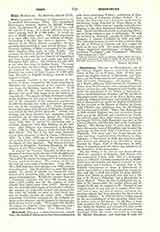

Shire, Vicariate Apostolic of (SHIRENENSIS), in Nyassaland Protectorate, Africa. The Nyassaland Protectorate formerly known as British Central Africa lies between 9° 41′ and 17° 15′ S. lat., and 33° and 36° E. long. It is about 520 miles long, its width varying from 50 to 100 miles. It covers an area of 43,608 square miles. The white population is at most 600, while there are millions of blacks. Nyassaland is divided into thirteen districts. The mission of the White Fathers evangelizes the five northern districts which lie west of Lake Nyassa. The Vicariate Apostolic of Shire is composed of the eight other districts lying south of Lake Nyassa. The vicariate lies between 13° 30′ and 17° 15′ S. lat. It is bounded on the north by the District of Angoniland and Lake Nyassa, on the east, south, and west by Portuguese East Africa. The territory lies 130 miles as the crow flies from the Indian Ocean. The name is derived from the River Shire which flows through the length of the vicariate. The river carries to the Zambezi the waters of Lake Nyassa; it is 295 miles long, 245 miles in English territory, and 50 in Portuguese territory.
Propaganda confided to the missionaries of the Society of Mary, founded by Bl. Louis Grignion de Montfort, the evangelization of the territory which now forms the Vicariate Apostolic of Shire. On June 28, 1901, the first three missionaries arrived at Blantyre and on July 25 began their first mission in Angoniland. The mission of Shire developed rapidly, owing doubtless to the zeal of the missionaries but also to the sympathy of the numerous population. In 1904 the mission was made a prefecture Apostolic and one of the missionaries, Rev. Father Prezeau, former missionary of the Diocese of Kingston, Canada, was elected the first prefect Apostolic. Already four stations had been founded, and numerous schools established in all directions spread the Christian doctrine. The results were satisfactory. On April 14, 1908, Pius X erected the prefecture into a vicariate Apostolic with Msgr. Prezeau as the first vicar. Msgr. Prezeau was consecrated at Zanzibar, October 4, 1908, by Msgr. Allgeyer of the Fathers of the Holy Ghost. The life of the first vicar Apostolic was of short duration; he died in France December 4, 1910. On May 4, 1910, one of the missionaries received from Rome the notification of his elevation to the dignity of vicar Apostolic. Msgr. Auneau was consecrated at Chilubula, Northern Rhodesia, by Msgr. Dupont of the White Fathers, November 1, 1910.
At present the Vicariate Apostolic of Shire has 4 missionary stations and 2 convents of the Daughters of Wisdom founded by Bl. Louis Grignion de Montfort. The staff of the mission is composed of 12 missionaries, 9 nuns, and 2 lay brothers. The workers are few for the task but good work is being done. From 1901 to 1911, 2078 baptisms were administered, 1000 catechumens prepared. The 70 schools have more than 5200 pupils. By means of schools the Protestant sects spread their doctrines; they are the most powerful means of propagation. Within the vicariate there are 7 Protestant missions; they have 325 schools, more than 11,606 pupils, and for the support of their schools they spend more than £5173. Schools are also the most powerful means of action for Catholics; the teachers are especially trained and educated for this work, the schools are open on every week day, and on Sunday prayers are taught there. Despite formidable Protestant competition the Catholic religion makes progress, and by degrees its doctrines are made known to the people. The negroes who inhabit the region are Angouis, Yaos, and Angourous, representing. three different tribes.
JEAN MARIE RYO

